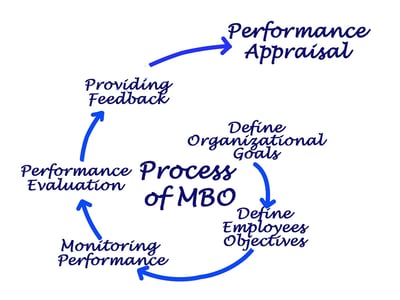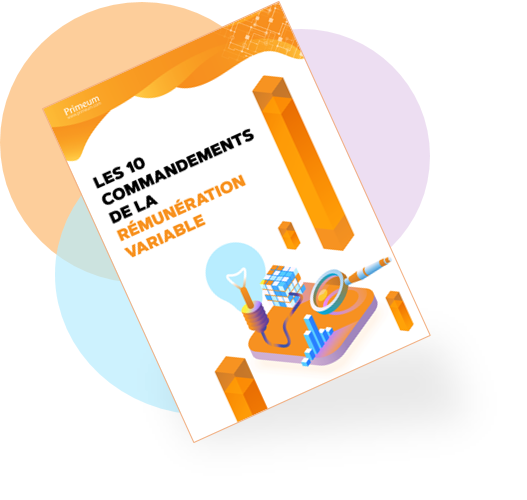While managers and executives are now familiar with the three main types of incentive compensation, a number of lesser-known calculation methods exist, each offering the opportunity to create specific incentives for your staff.
Much like algorithms designed to enhance recruitment or career management, increasingly sophisticated calculation methods are now in plentiful supply for those looking to optimise their compensation management, particularly with regard to incentive compensation - which is taking on more and more strategic importance for companies.
Data analysis and the application of innovative calculation procedures are therefore opening up the fields of possibility to companies eager to effectively motivate their staff using incentive compensation. In this article, we’ll look at the various methods for calculating incentive compensation and the key role they play in crafting precise, efficient motivational tools.
TRIED AND TESTED WAYS OF MOTIVATING YOUR STAFF
Among the most well-known calculation procedures are commission, rankings and sales vs. target bonuses. With these methods, the variable portion of an employee’s salary can be determined using one of the three engines, which are sometimes applied in combination over the same period.
Commission: a calculation engine “as old as time.”
![]()
Commission is one of the oldest calculation engines around, and also one of the most widely used around the world. It involves the employee taking a cut of the revenue they generate, thereby rewarding their individual contribution to the overall result. This model for incentive compensation is rarely capped, and can be optimised using an accelerator, which involves applying a threshold above which the employee can pocket a much higher percentage.
As opposed to the two other calculation engines, commission does not introduce a performance requirement: rather, the employee must get into the mindset of “the more I sell, the more I earn” and set their own goal for results. Commission is widely used in situations where it’s difficult to assess the potential of a new product or new market. It is also often misapplied, as companies find themselves ill-equipped to calculate the finer details and define precise objectives.
Rankings: most often used as an incentive during challenges
![]()
As the name suggests, this system involves ranking staff from highest-performing to lowest-performing, and dividing the pre-defined compensation budget up based on these rankings. As such, this implies using up the entirety of the compensation budget regardless of the performance level achieved.
Rarely used for long-term bonus schemes, this calculation method is mostly used for challenges, or to boost the launch of a new product for which there is no established market sales data.
Target bonuses being used more and more
Finally, the target bonus is based on the allocation of a sum when the staff member achieves a pre-defined objective. The level of the target being sought is adjusted based on each individual’s potential, the area in which they are developing, their sector or the nature of their client portfolio.
The target bonus is considered as the optimum solution by many companies, who freely use this method not only to motivate their sales staff, but also support staff. As long as the conditions for setting objectives are fair, the target bonus represents an excellent motivational tool and allows companies to provide qualitative compensation for each individual staff member.
QUALITATIVE BONUSES: AN INCREASINGLY IMPORTANT STRATEGIC CHALLENGE
A qualitative bonus is measured generically, with care taken to ensure that it is as objective as possible by using precise and measurable quantitative indicators. The idea, therefore, is to create a score that reflects qualitative performance and to apply this score to a scale, in order to identify a bonus amount that reflects the qualitative dimension of the performance.
The methodology used to score qualitative performance on various quantitative indicators will vary based on the calculation engine selected. The calculation of a qualitative bonus can therefore be based on a single KPI, the MBO (Management by objectives) or on the “score card” principle. In these three scenarios, the aim is to establish a quantitative assessment scale for each qualitative indicator in order to obtain a standardised bonus calculation, and to avoid the pitfalls of discretionary or managerial bonuses, which are by definition totally subjective and not based on any objective foundation.
Calculation procedure for qualitative bonuses based on a single KPI
In order to be able to allocate qualitative bonuses, it’s necessary to apply the various quantitative indicators to a scale.
When allocating qualitative bonuses based on a single KPI (performance indicator), the qualitative assessment criterion will be rewarded in the same way as a quantitative criterion. For example, the key criterion of customer satisfaction would be graded on a scale from 1 - 100, allowing you to establish a precise score as a result - more commonly known as NPS or Net Promoter Score. Analysing a qualitative criterion using a precise scale incorporating factual and measurable evaluation criteria thereby allows you to calculate the amount of variable pay to reflect a qualitative performance.
If the scale indicates a score of zero, the amount of the qualitative bonus allocated will automatically be nil. Starting from a certain score, the employee may have a chance at a higher bonus based on a qualitative performance. As such, the higher the score, the higher the bonus earned. In order to successfully calibrate the bonus allocation thresholds, it’s essential to base them on previous results for the various periods in question: setting the lower end of the scale at 10 when the NPS (net promoter score) for previous years was 100 would make no sense.
In order to offer an appropriate evaluation scale for qualitative performance, it’s important to take into account annual records and select precise, measurable quantitative indicators that will most accurately reflect the nature of the qualitative tasks carried out.
Management by Objectives, or MBO
Management by objectives (MBO) enables you to award bonuses based on qualitative criteria. Between two and four key performance aspects are selected and broken down into objectives and various sub-tasks; scores are then attributed to these various aspects, which allow you to evaluate the level of qualitative performance. These various scores are then analysed using scales that will enable you to define the amount of the qualitative bonus.

For the evaluation of the qualitative aspect, there is also a method that’s exclusive to Primeum: the "Performance Quality Process.” Whereas in MBO we might find two or three main questions, the way the Performance Quality Process works is based on a satisfaction scale similar to the Likert scale, capable of evaluating the objective achieved. As it is capable of measuring individual attitudes, this scale enables us to evaluate the extent to which targets have been achieved (fully achieved, partially achieved, exceptional performance), as well as the related level of satisfaction (somewhat satisfactory, fairly satisfactory, satisfactory or very satisfactory).
In this way, the scale for evaluation of objectives met allows you to create a quantitative indicator in addition to a purely qualitative one, so you can set bonus amounts to reward qualitative performance levels. In addition, the Primeum Performance Quality Process allows you to create an intrinsic link between two requirements: the need for quality and the need for economic performance.
The “score card”

A “score card” is based on the same principle as Management by Objectives (MBO). Between two and four key aspects are selected for grading, and each objective is broken down into a multitude of precise questions (between 40 and 70 closed questions). This means there’s no chance of any doubt arising over the interpretation of the results. Did the employee carry out this specific task? The answer can only be yes or no.
Generally speaking, a certain degree of interpretation remains inherent in the appraisal of qualitative performances, but with the score card procedure there is relatively less potential for uncertainty than with the Likert evaluation scale (not satisfactory, satisfactory, etc.). With this method, we obtain a precise score which can then be applied to a scale, so we end up with a thoroughly vetted qualitative bonus.
PRIMEUM CALCULATION METHODS ALLOW YOU TO CREATE SPECIFIC AND MORE SOPHISTICATED INCENTIVES
In addition to the classic engines such as target bonuses, commission and rankings, Primeum offers exclusive bonus calculation processes enabling you to generate specific incentives.
The Primeum Surface: what if your sales reps could no longer put things to the side?

The Primeum Surface enables companies to create bonuses for two performance criteria which have been inextricably combined. In certain situations, companies need to create an incentive for staff to produce two performances which are not interdependent. As such, this Primeum algorithm prevents you from overpaying recipients when their performance in one area is below par.
For example, when you ask a sales rep to pay special attention to margins they’re going to tend to focus heavily on accounts with higher margins, and if you ask them to boost revenues they’ll be more likely to prioritize the volume of sales made - at the expense of margins. The Surface allows you to incentivise staff to optimise both their margins and the revenue generated. It should be noted that this procedure for encouraging two simultaneous performance levels in an intelligent way enables you to sidestep a number of the undesired effects generated by classic bonus structures, which are based on additive mathematical formulae in which staff can choose the performance indicator that will make them the most money.
Commitment: stepping away from negotiated objectives

The aim of Primeum Commitment is to get the employee “to commit to hitting the right targets”, making it more profitable for them to achieve an ambitious objective than to surpass an average one.
When negotiating objectives, sales reps tend to negotiate their targets down as low as possible, so they can surpass them and increase their bonuses. With the Commitment procedure, we’re asking the sales rep to commit to their objective. If they commit to an objective that’s too low (e.g. 80, and they score 100), they’ll receive a much lower bonus than if they commit to 100 and achieve 100.
In this way, both Manager and employee are committing to an ambitious yet realistic target, using an approach that builds greater mutual trust and helps avoid many of the undesired effects of traditional target-based compensation schemes.
If the performance level achieved is relatively low compared to what was initially estimated and targeted, the employee will receive a lower bonus than if they had aimed for a more appropriate target from the start. This principle of commitment make the employee more actively responsible for their own performance, and offers them the chance to debate openly with their manager. When setting objectives using traditional methods, dialogue tends to be less natural, and the employee will often request that objectives be lowered so that they can be sure to achieve them. By contrast, the principle of Commitment will incentivise the employee not to set themselves limitations by aiming as closely as possible for the highest target they feel they can achieve.
The Primeum Contributor
Sometimes it’s not possible to set individual objectives, and when that happens it’s time to use the Primeum Contributor. This involves incentivising each employee to make their greatest possible contribution to the overall result, without the limitations of a ranking system.

Generally, we use a ranking scheme when strict budgetary control is necessary. However, these systems present two major drawbacks: they lead directly to the bonus package being uncoupled from the overall result, and secondly they don’t allow you to account for the real difference in results between the various recipients. As such, in practice, if the top-ranked member of group produces a performance that appears distinctly inferior to the initial objective, should they be allocated the same bonus as they would have if the performance put in by the whole team had been better?
In this scenario, it’s important to have the ability to objectively measure each individual’s contribution. In this situation, the Primeum Contributor can provide a real solution: this calculation procedure enables you to sidestep the main drawbacks inherent to traditional ranking systems, by offering a simple way to express the relative contribution made by each recipient to a collective performance. In addition, the Primeum Contributor offers the advantage of maintaining total control over the compensation budget.
Adjusted Commission
The “Adjusted Commission” calculation procedure introduces the concept that even with the same overall sales results, performance is considered better when it represents significant individual progress. This means that the appraisal of individual contributions is enriched via specific progress requirements.

In this way, adjusted commission creates an inextricable link between individual contributions to overall sales results and the individual progress of each employee. As such, a weaker contributor who has made significant progress can receive a bonus equivalent to that of a major contributor whose performance stats are down.
This mechanism incentivises the “middle of the pack” within a team, encouraging them not to become complacent with their gains, but to pursue higher levels of progress in order to optimize their commission. At the same time, the top contributors are always motivated to stabilise their portfolio in order to avoid any kind of attrition or loss of clientele.
The approach enabled by this original Primeum procedure gives companies the power to adjust commission directly based on a performance level expressed in terms of individual progress, all while retaining complete mechanical control of the overall cost.




